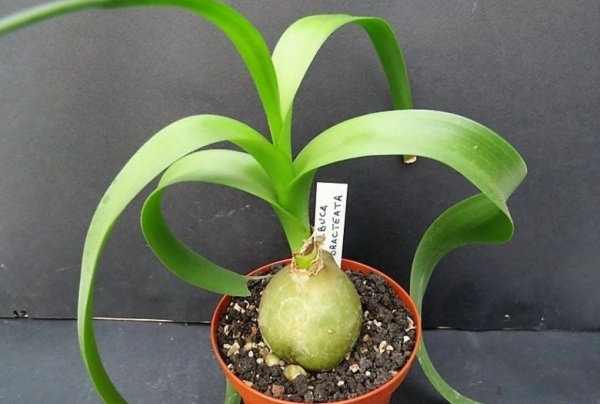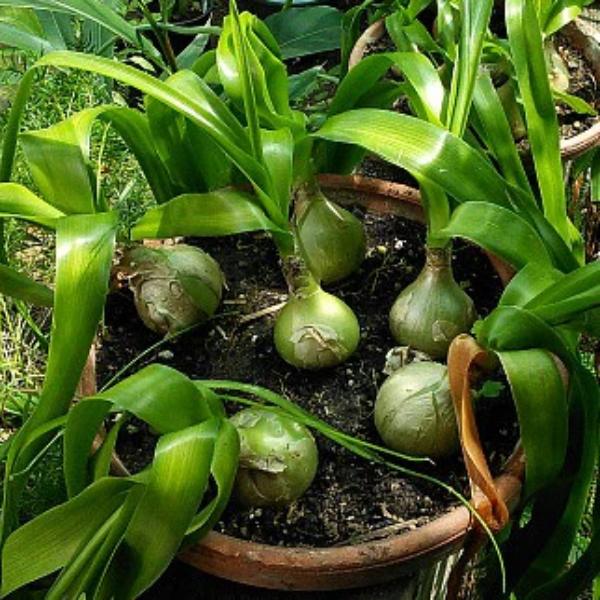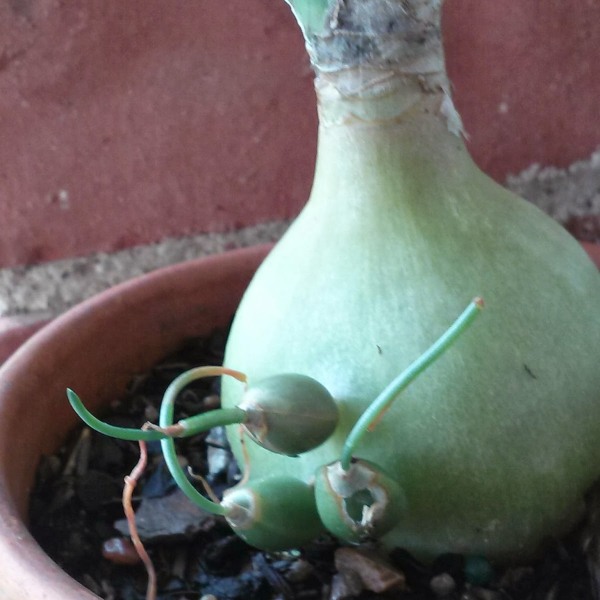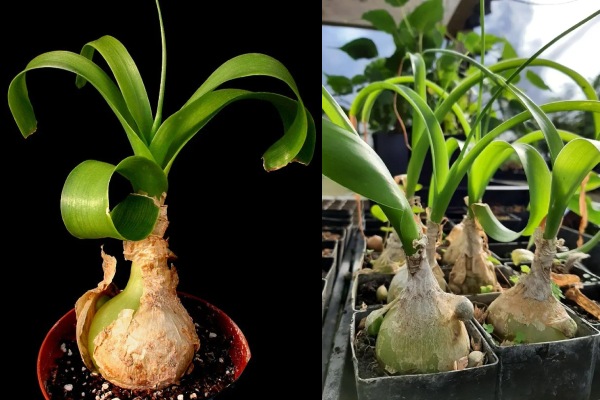Introducing the amazing Pregnant Onion, scientifically known as Ornithogalum longebracteatum, but more commonly referred to as Albuca bracteata. This is one of the more common interior plants from the Aspragaceae family and is native to South Africa. It has a large, Swollen bulb that produces many small bullets, making it look “pregnant.” Its long, strap-like leaves and delicate white flowers on a tall stem even make it stand out. Pregnant Onions do well indoors and are easy to care for. In this article, we will provide a complete guide to the growth and care of Pregnant Onions.
Overview
Plant Type: Bulbous
Species: A. bracteata
Family: Asparagaceae
Genus: Albuca
Common Name: False Sea Onion, Sea Onion, German Onion
Season: Early spring or Fall
Native: South Africa
Toxicity: Toxic to humans
Why Pregnant Onion plant named “Pregnant Onion”?
The Pregnant Onion plant gets its name because it resembles an onion in appearance. It has layers like an onion, and as its bulb grows, it forms a papery outer covering that flakes off. Tiny baby onions, called bulbils, also grow from the sides of the mother plant’s bulb, giving the appearance of the plant being “pregnant”. While it typically has two leaves, it can grow up to four or five leaves as it matures. When placed in direct sunlight, its leaves continue to grow. These leaves are stiff and resemble those of a succulent plant.

Idea Planting Seasons and Growth of Pregnant Onions
The best time to plant Pregnant Onions is in early spring or fall when the weather is mild. They bloom from May to August with fragrant white flowers and a striking green bulb above the soil with elegant leaves. These plants grow actively, producing small bulbs each year. As the bulbils grow heavier, the stalks may bend. Use stakes or cages to support them and prevent breakage. Similarly, make sure that the bulbils make good contact with the soil and root properly.
What are the Best Care Tips for your Pregnant Onion Plant?
By providing the proper care, you can keep your pregnant onion plants healthy and strong. Here are some essential tips to support their growth and help them thrive in any condition.
Light
When selecting a location for your plant, opt for a spot that receives ample bright light during the day. However, avoid exposing the plant to intense direct sunlight, especially around midday in the summer. As it can lead to the bulbs and leaves being burned. Ensure the plant gets at least 4 hours of bright sunlight when kept indoors. Although it can tolerate partial sun, insufficient light can cause weaker growth and fewer blooms. Remember, the more light the pregnant onion gets, the larger and healthier its leaves and blooms will be.
Soil
Pregnant Onion plants flourish in well-drained soil that is loose and fertile to support their growth. While the bulbs usually sit above the soil surface, it is essential to ensure that the soil has good drainage and aeration to improve its texture and nutrient content. Adding organic compost can further enhance soil drainage, providing optimal growing conditions for Pregnant Onion plants.
Spacing
When planting Pregnant Onion, space them about 6 inches apart to allow room for the bulbils to grow without being crowded. Make sure there is enough space for the bulbils to fall to the ground and root naturally.

Water
It is essential to water Pregnant Onion plants consistently to keep the soil evenly moist. Water them every two weeks, as this schedule matched their ability to store water and endure dry periods. Avoid overwater, as they can easily rot in waterlogged soil.
Temperature and Humidity
Well, the pregnant onion plant enjoys spending spring and summer on balconies or in gardens. If you are keeping this plant indoors then make sure that the plant gets enough fresh air. Similarly, it can’t handle extreme heat so, it’s best to keep the temperature between 21-25 degrees. Cool temperatures help to flourish the blossoms.
Pruning
Pruning a Pregnant Onion plant is important so it stays healthy and looks great. Use clean, sharp scissors or pruning shears to trim away any dead, yellow, or damaged leaves. Just cut these leaves at the base where they connect to the main bulb. If your plant is getting too big or looks messy, you can also trim it to make it neater. Be careful not to trim too much, as the plant needs enough leaves to photosynthesize and grow properly.
Pests and diseases
This plant often attracts pests like aphids or onion thrips. It is important to inspect for these insects regularly to keep the plants healthy. If you find any, use organic solutions like insecticidal soap or neem oil to control them.
How can you propagate the Pregnant Onion plant?

Propagating the Pregnant Onion plant is simple. The best time to do it is in the spring because the weather and light are just right for growth. To propagate, use the small bulbs or seedlings from the plant. If the bulbs don’t fall off by themselves, gently separate them in the spring. Plant the seedlings with their bases slightly buried in the soil. Water the plant for the first time right after planting. Then, water it again only after the first roots have formed. Well, you need to be patient with this plant as it may take some time for it to establish and grow.
Conclusion
In conclusion, the Pregnant Onion, more scientifically known as Albuca bracteata, is an attractive plant with an inflated bulb and striking looks in its foliage. Native to South Africa, this plant will certainly thrive indoors with high amounts of light, sharply drained soil, and constant watering. With bulbils giving the effect of being “pregnant,” its appearance makes it a wonderful addition to any collection of plants grown indoors. With proper guidelines for planting and taking care of a plant, you can make sure light, soil, watering, temperature, and moisture conditions are met, so it serves to be in your interiors for a long and gives beauty as well as health benefits.
Frequently Asked Questions
1. What is a Pregnant Onion plant?
The pregnant Onion plant is one of the more common interior plants from the Aspragaceae family and is native to South Africa. It has a large, Swollen bulb that produces many small bullets, making it look “pregnant.” Its long, strap-like leaves and delicate white flowers on a tall stem even make it stand out.
2. Can the Pregnant Onion plant be grown indoors?
Yes, the Pregnant Onion plant can be grown indoors as long as it receives enough bright, indirect light, and proper care.
3. What is the best time to propagate a Pregnant Onion plant?
The ideal time to propagate a Pregnant Onion plant is in the spring. This season provides the best temperatures and light levels for growth.
